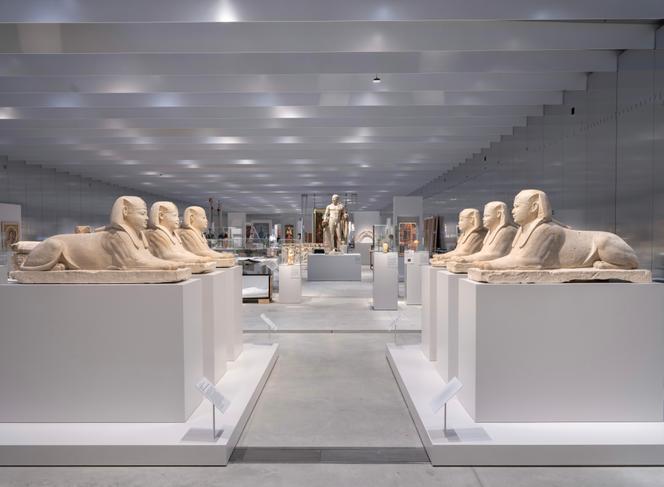


Wednesday, December 4 was a day of celebration at the Louvre-Lens. To mark the Sainte-Barbe celebrations, the patron saint of miners, the northern French museum unveiled a revamped version of the Galerie du Temps, a vast 3,000-square-meter space covering five millennia of history. Everything has been redesigned, starting with the scenography entrusted to the Atoy agency. It created a "river of time" winding through the space to link the 250 works, all of which are new, apart from 10 surviving from the previous collection. "We're changing the works, the scenography, but not the principle, the freedom and decompartmentalization," said the museum director, Annabelle Ténèze.
When it opened in 2012, the Galerie du Temps disrupted the conventions of its Parisian parent institution, where paintings and sculptures are confined to separate departments and geographical areas are strictly divided. In Lens, suddenly 5,000 years of art history were brought together in a single glance: The French Middle Ages stood alongside Byzantine works, and Mesopotamia rubbed shoulders with the Greek world. This revolutionary approach to museography quickly resonated with visitors. According to a survey conducted by the museum in 2019, over 94% of respondents were satisfied with the selection of works on display, and nearly 95% appreciated the scenography.
So why change something that already works, especially as the underlying project remains fundamentally the same? "We could have easily waited 15 or even 20 years, but we didn't want to wait until the Galerie du Temps needed a revamp or until the public grew tired of it before we acted," said Xavier Bertrand, president (Les Républicains) of the Hauts-de-France regional council. In his view, there was also a need to reset the foundations of the partnership with the Louvre. "For years, I felt like we had to beg the Louvre to lend us exceptional pieces. We did have Delacroix's La Liberté Guidant le Peuple [Liberty Leading the People], but afterward, we had to keep asking, pushing and requesting, again and again," said the official. "When I said during the anniversary in 2022 that the Louvre was at home here and that its finest pieces belonged here as well, Laurence des Cars understood the message perfectly."
The head of the Louvre has since sent some of her treasures to Lens: Vermeer's The Lacemaker (1669-1670) in 2023, and Chardin's Le Panier de Fraises des Bois (Basket of Wild Strawberries, 1761) in the spring. For Act II of the Galerie du Temps, the parent company has loaned Giuseppe Arcimboldo's The Four Seasons as well as half a dozen imposing Egyptian sphinxes. The new display is now set to remain in place for the next 10 years. Rotations will be less frequent than in the past, every two to four years, but they will be "significant," according to Ténèze. "The idea is not to change for the sake of changing, but to make these changes visible, to explain them, to share them." In short, to turn them into an event.
You have 55.34% of this article left to read. The rest is for subscribers only.
